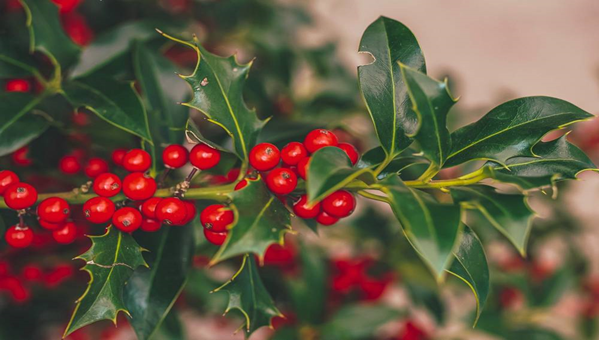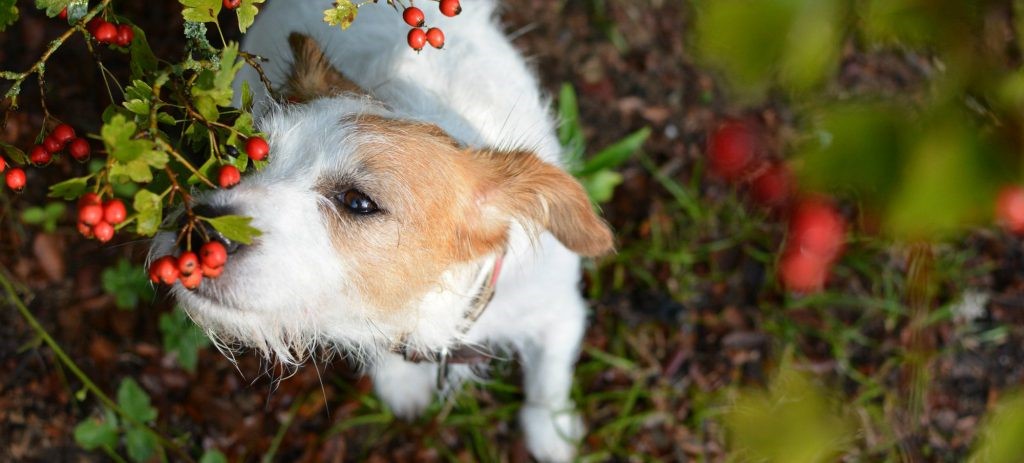Holidays are just around the corner; everyone plans their decorations, invitations, and more. If you are a dog parent, it is again the time for you to worry about what decorations are safe for you and what not.
Holly berries may feel essential for holiday decorations but can harm pets. In general, most varieties of holly bushes are poisonous for pets.
So, keep reading if you are worried about whether it can harm your dog. Here, we will discuss all types of bushes that are holly and poisonous to dogs.
In this blog, we will also discuss the symptoms, causes, and treatments for holly poisoning to keep your furry friend safe this holiday.
Are Holly Bushes Poisonous to Dogs?

Ilex, more commonly known as holly, is a genus of plants common in subtropical and temperate regions of the world. The holly bushes are often used as ornamental plants for their shiny and dark green leaves and bright red berries during holidays. Their beautiful decorations of holly bushes are essential for Christmas.
In general, consumption of Holly in small amounts is not fatal. However, ingesting multiple holly berries or leaves can cause gastrointestinal issues like vomiting, diarrhea, upset stomach, etc. Holly berries contain toxins that are harmful to dogs and poisonous to many other pets.
So, you must keep your dog away from them.
Types of Holly Bushes

Holly bushes come in a wide variety of more than 600 spices. But most of them are toxic and poisonous for dogs and other pets. Here are some common types of holly bushes to watch out for while decorating your home-
- English holly – The English holly is also known as European Holly. It is a common holly type that grows across Europe, South Africa, and Southeast Asia. It has shiny and leathery leaves with bright red and yellow berries.
- American holly – It grows in the south-central and eastern regions of America. The plant has dark red berries with dark green leaves. However, the leaves of the American holly are less glossy than the English hollyes.
- Japanese holly– Another common type of holly bushe you should watch out for is the Japanese holly. Japanese holly is also called boxed-leaves holly. It grows in regions like China, Japan, Korea, Taiwan and Sakhalin. The plant has dark blackberries with dark green and glossy leaves.
Symptoms of Holly Poisoning in Dogs

All holly plants, including the leaves and berries, contain several toxic compounds that cause an upset stomach. But, ingesting these plants or berries in large quantities can cause serious health hazards in pets, including dogs. Here are some common symptoms your furry friend can experience after consuming holly-
- Diarrhea
- Loss of appetite
- Excessive drooling
- Pawing at mouth
- Head shaking
- Vomiting
- Blood spots on the mouth or bleeding mouth
However, in most cases, consumption of Holly is not fatal and does not cause serious health injury. However, if things get worse, your dog can fall unconscious or face seizures as a part of severe symptoms. Take your dog immediately to a vet if you notice any of the above symptoms.
Causes of Holly Poisoning in Dogs

You might be wondering why holly is poisonous for your dog. Well, the plant contains several toxic chemical compounds (moderately) for your furry friend. Here are the toxic chemicals of the Holly plant that cause poisoning in dogs-
- Caffeic acid
- Chlorogenic acid
- Caffeoyl derivatives
- Caffeine
- Feruloylquinic acid
- Quinic acid
- Ilicine
- Theobromine
- Quercetin
- Rutin
- Ilexanthin
- Tannins
- Kaempferol
Treatment

Holly bushes are toxic for your dog or any canine pet, but if you provide proper care and treatment on time, it will not cause any serious injury or health hazards to your dog.
In most cases, the Holly poisoning treatment for dogs can be performed at home, especially if the symptoms are mild. But you must consult your veterinarian center about your dog’s condition and the quantity of Holly plant/berries your dog has consumed.
Depending on the symptoms your dog is showing, the veterinarian doctor will suggest whether you can treat your dog at home or visit the vet’s office.
Flushing out the plant materials from your dog’s mouth (by swallowing the plant particles) will help you prevent further damage.
Once the flushing is done (by vomiting), give them plenty of cool water to soothe their mouth pain and substitute the loss of fluid due to the symptoms of diarrhea and excessive vomiting. Depending on your dog’s condition, it may take several hours to a few days to recover from it.
Conclusion
The beautiful and vibrant red berries with glossy dark-green leaves of Holly bushes can look alluring as Christmas or holiday decorations.
But if you have a furry member at home, beware of their poisonous side that can cause several health hazards for your tinny friend.
The plant contains several toxic chemicals that can harm any canine pet. So, to make your holiday decorations pet-proof, you must avoid these bushes or opt for artificial holly bushes instead.
Above, we have shared everything you need to know about holly and its poisonous effects on dogs.
So, keep this in mind while decorating your house this holiday. Have a pet-friendly holiday!
Frequently Asked Questions
Who Would I Know if My Dog Ingested a Holly Berry?
Observing its symptoms makes it easy to know whether your dog ingested a Holly berry. The consumption of Holly berries can cause gastotestronial issues like upset stomach, vomiting, diarrhea, etc. You can also check its mouth for spots of blood from chewing the sharp leaves. Symptoms usually start to show within 30-60 minutes of the consumption.
What is the Best Way to Get Any Poisonous Holly out Of My Dog’s System?
The best way to remove any substance of the poisonous holly plant from your dog’s system is by flushing it out. You can induce vomiting to eliminate all the Holly plant substances your dog has ingested accidentally.

